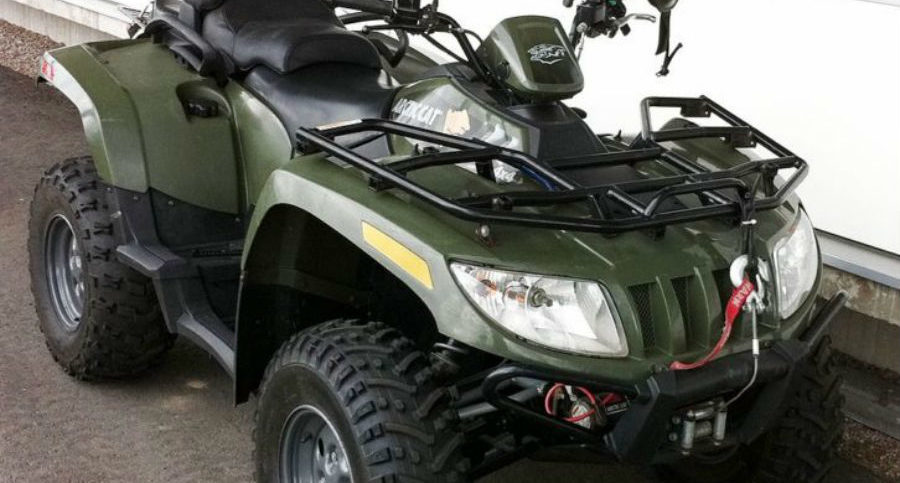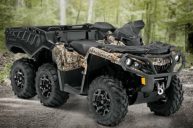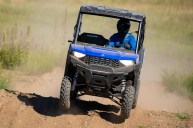Buying a used vehicle shouldn't be a gamble. When you're buying a new car, truck, SUV, UTV, etc., your best option is often having a mechanic look it over before purchasing. However, ATVs are built to be more accessible, which means that, with a little direction, the average person can price an ATV or four-wheeler themselves before buying.
Here, you'll find all the information you need to buy and price a used ATV yourself. We've included an inspection checklist to help you assess an ATV for any dealbreakers or price reducers.
Where to Buy Used ATVs?
You have several options for buying an off-road four-wheeler or all-terrain vehicle. Because they are so easy to inspect, you can reliably purchase from most owners or dealerships that have a title after looking it over closely. There are tons of great licensed dealerships across America, but you might also find the ATV of your dreams on Craigslist or from a local seller. If you're looking to buy an ATV, keep your ear to the ground on all fronts of the market.
How Much Are Used ATVs?
Keep in mind that most ATV sales these days are used, private transactions. This means that there are few reliably recorded sale prices. It also means that ATV prices will vary a lot based on regional demand.
But, pricing a used ATV isn't as tough as it might sound. First, head over to either Kelley Blue Book, Nada Guides, or ATV Trader. Even just a local Facebook group can give you a good idea of prices and demands for certain models.
After you find a base price for the make, model, and year, use the following guide to decide how much an ATV is worth to you personally. We'll give you an idea of how much you'll want to knock off for each item or issue on the checklist. We'll also let you know if an issue is more trouble than it's worth, in which case you'll want to walk away.
Read More: The Sherp ATV Is an Off-Roading Machine Unlike Any Other
Inspecting Used ATVs
Without further ado, here is how you should go about inspecting a used ATV before purchasing. We'll start with the simple stuff that demonstrates proper or poor maintenance. Then, we'll help you look for some of the most common problems in used four-wheelers.
Check the Filter
Check the filter first. Replacing filters is one of the cheapest, easiest aspects of ATV maintenance. If the owner of the used ATV hasn't even maintained the filter, they probably haven't done much else, either. Ask about the ATV's maintenance and be prepared to walk away.
Check the Dipstick
Similarly, if the oil and fluids haven't been maintained, other issues are almost a certainty. Pull the dipstick, wipe it, and then push it back in before checking it. There should be a mark on the dipstick that shows the correct oil level.
Checking the dip stick level also gives you a chance to look for metallic bits in the oil. If you see flecks or pieces of metal in the used ATV's oil, something is seriously wrong, and you should walk away.
Check the Tires and Bearings
Next, use a flashlight to check the tires for any cracks or missing chunks of rubber. A new set of tires might cost up to $500 if you include labor. You'll want to discuss lowering the price from the ATV's standard if the wheels are not in proper driving condition.
While you're here, try to rock the tires a bit, preferably while on jack stands. If you feel any give in the wheels' connections, the bearings are worn and will need to be replaced soon. You'll probably notice inconsistent driving, which means the ATV is no longer safe. Try to get around $150 off per wobbly wheel.
Check the Shocks for Wetness
Now, look at the shocks. Specifically, you're looking for wetness around the top of the shock, which likely means the shocks are leaky and need to be replaced. You'll want to get about $150 for each shot shock, which you'll put toward repairs.
Check CV Boots and Joints for Grease and Dirt
Now check the area where the wheel connects to the ATV. You should see a black rubber, accordion-looking piece. This piece protects the CV joint from dirt and sand. If you see any cracks or damage to the boot, the joint probably has also damage from sand and dirt getting between the connection. Check for grease leakage around the boot, which also confirms a damaged boot and probably a damaged joint.
A boot replacement will cost about $150 and a CV replacement will cost about $200-300, depending on the model.
Check the Break Thickness, Gouges in Rotor
Check the brake pads, as well. Thin brake pads shouldn't be a deal-breaker, as this is routine replacement that you'll need to change pretty regularly anyway. However, if the pads are extremely thin, around 1/16th inch, the previous owner might have damaged the rotor.
Check the rotor either way for gouges or cracks, which would be a necessary and expensive fix — about $150 each.
Check for Engine Leaks
Run a clean, light-colored rag over the engine. You're looking in the areas where the two plates/panels on either side cap to the rest of the engine. These are the gasket covers, and if there is fresh oil on them, they'll need replacing. This might cost anywhere from $150-450, depending on where the leak is.
Wrapping Up
Keep in mind that each brand might vary slightly in how exactly you get to each inspection area. Depending on whether you're looking for a Kawasaki, Polaris, Honda, Yamaha, Suzuki, Can-Am, etc., you'll need to look up how exactly to access each part. It should be relatively simple. In addition, prices will vary a lot depending on location. A used ATV in New York will fetch a much different price than ATVs for sale in Dallas.
And, if you came here looking for model recommendations, the Yamaha Grizzly, Kawasaki Brute, Polaris RZR, Polaris Ranger, and Can-Am Outlander are all excellent models. You'll probably see at least a few of these on the market in your area since they are also extremely popular models.
Happy shopping, off-roader!
Read More: 5 New ATV Features Polaris Released Before Anyone Else




